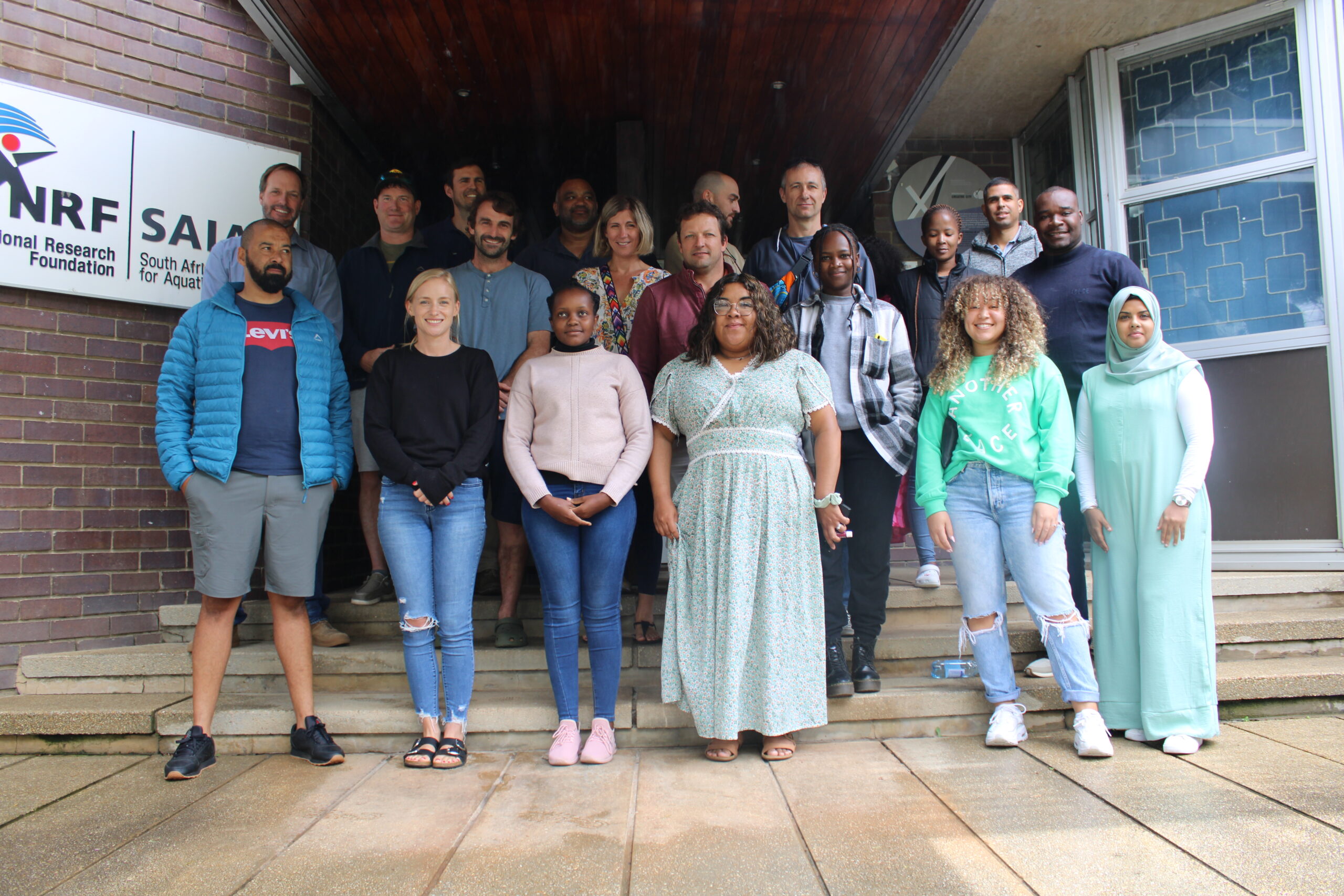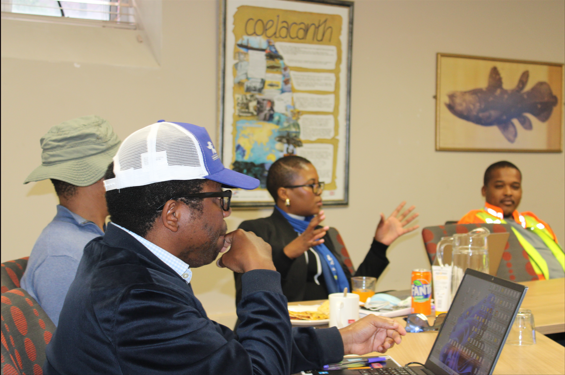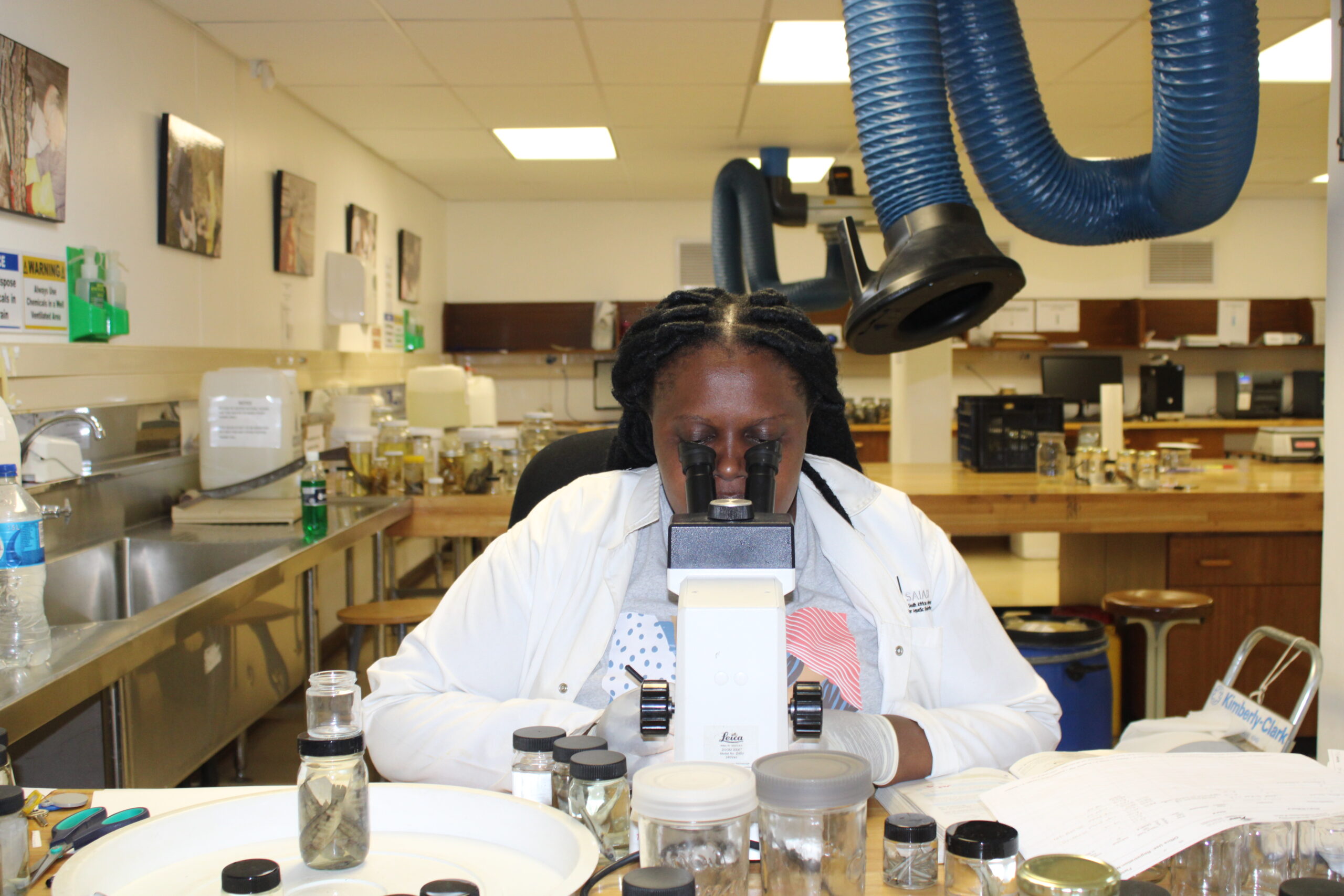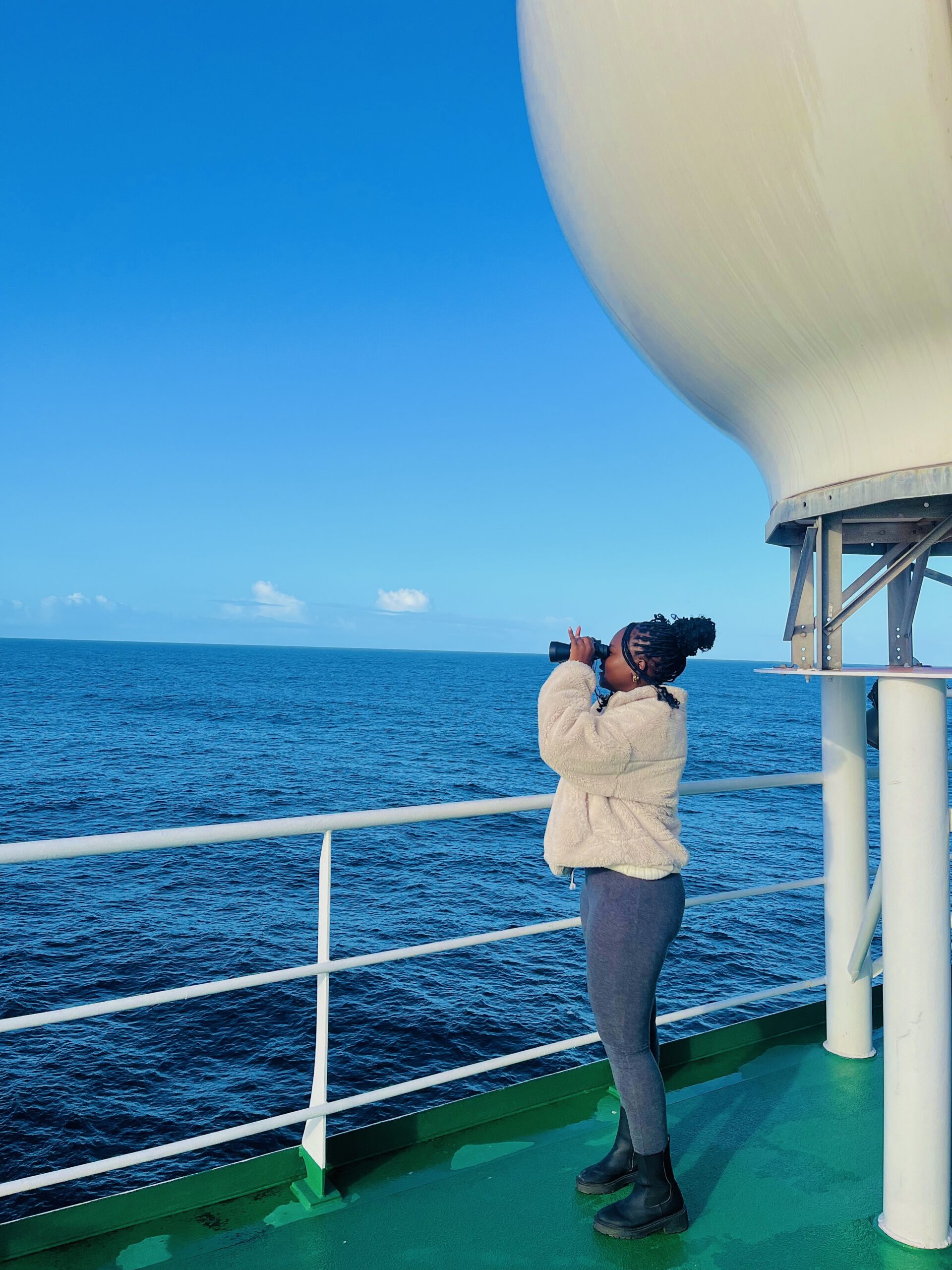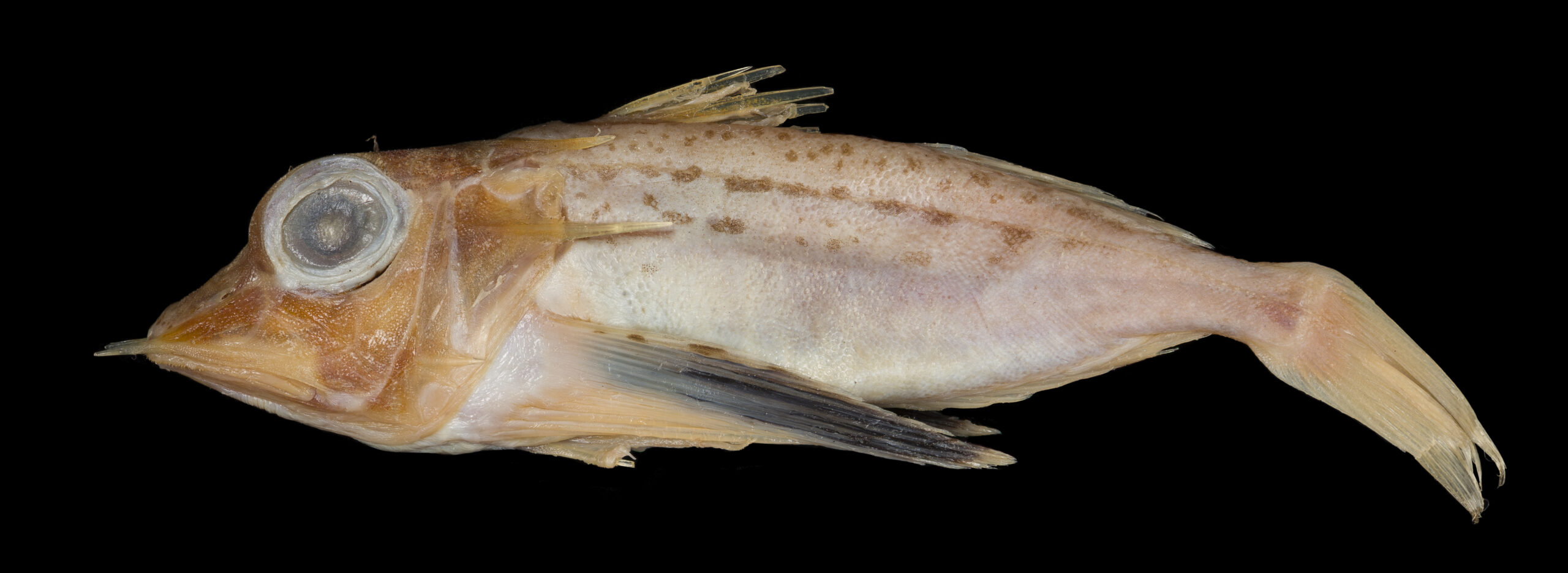The NRF-SAIAB’s Marine Remote Imagery Platform (MARIP), led by Instrument Scientist, Dr Anthony Bernard hosted a three-day hybrid (in-person/online) workshop for 44 attendees (24 in-person and 20 online) at the NRF-SAIAB venue in Makhanda, from the 9th to the 11th of January 2024. The workshop brought together researchers and managers from various research institutions in South Africa, Mozambique and Namibia to review the current status of research on demersal and benthic fish using the Baited Remote Underwater Video Systems (BRUVs) methodology, and to strategise ways to overcome persistent logistical challenges within the field and to improve the contribution of scientific data to management, government decision-making and policies.
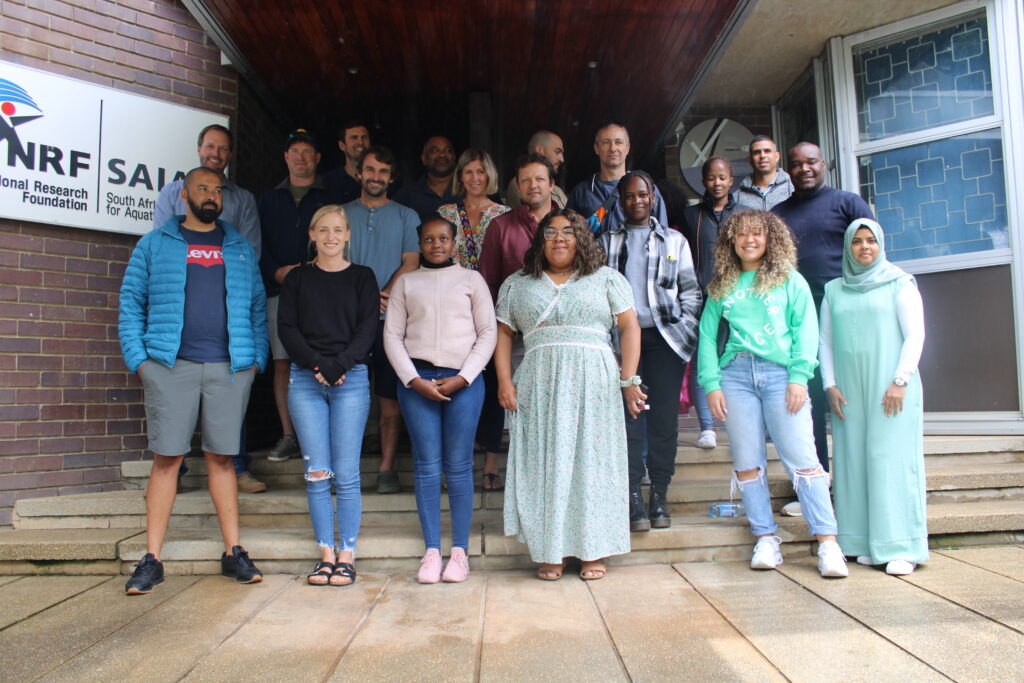
With the growth of the BRUVs field of research in South Africa, there is an opportunity to collaborate with the various experts in the field and to formalise the South African BRUVs research network that can tackle challenges such as overfishing and exploitation of marine resources. Baited remote underwater video (BRUV) and stereo-video (stereo-BRUV) surveys of fish have been taking place in South Africa for over a decade. The fundamental aspects of the methodologies have been well standardised thanks to collaborations and early workshops (2013 & 2016) that aimed to advance the value of the method for research and management. Dr Anthony Bernard states that, “Over this time period, the BRUVs and stereo-BRUVs research community has expanded, the best-practices for the methods have matured and the spatial and temporal coverage of datasets has grown”. However, many challenges have persisted that have impacted the potential benefits and contribution of BRUVs research to management at both local and national scales.
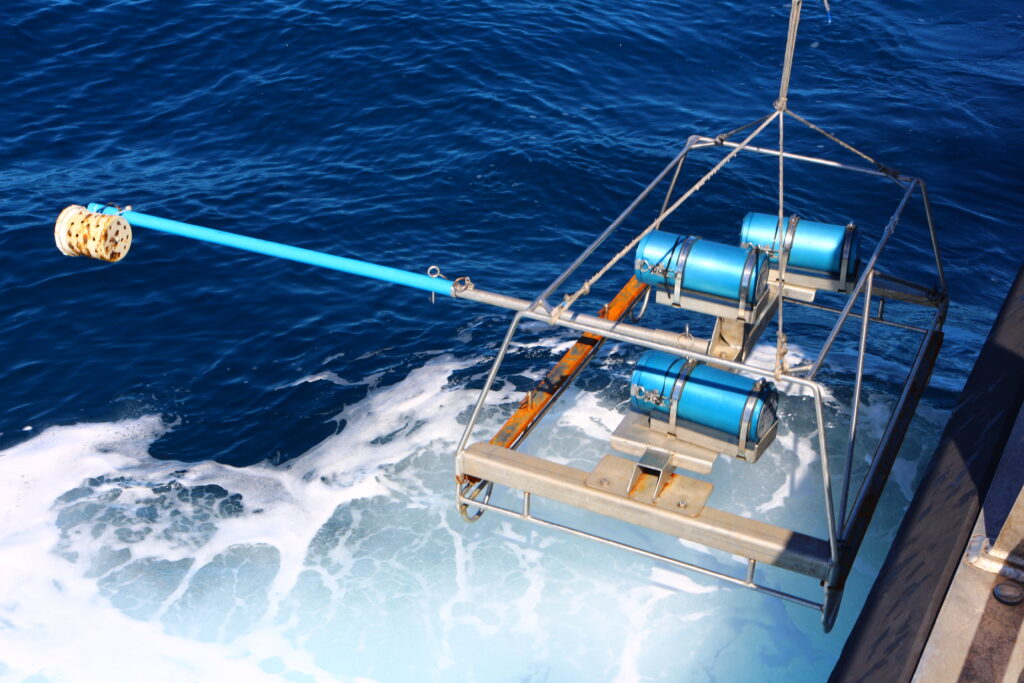
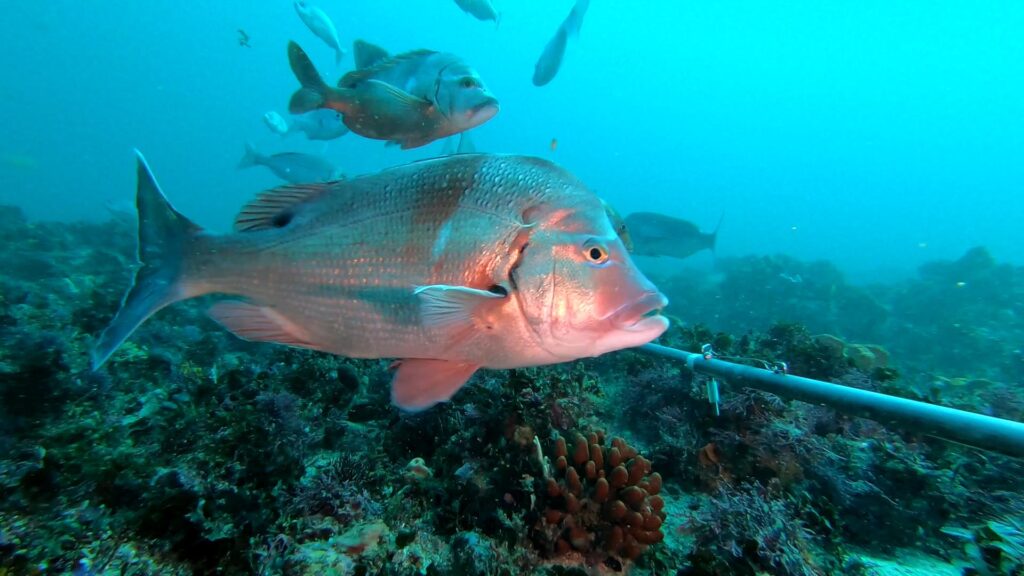
On the left is a picture of a BRUVs instrument and on the right is an image captured by the BRUVs instrument.
Along with other organisations in South Africa, the NRF-SAIAB MARIP monitors the status of marine fish that live close to the seafloor. These fish are commonly caught in recreational and commercial fisheries and there are concerns that the current and historic levels of exploitation have been unsustainable for many species. The platform’s BRUVs research techniques are used to monitor and to provide valuable information on the ecology and population structure of fish species. This data can then be used to measure the effectiveness of Marine Protected Areas (MPAs) and to support fisheries regulations. “BRUVs and stereo-BRUVs are very straightforward pieces of research equipment. A BRUV consists of a camera in a waterproof container that is mounted to a frame so that it provides a side-on view of the seafloor. A container filled with mushed up sardine is positioned in the cameras field of view to attract predatory and scavenger fish into the videos”, said Dr Bernard. With these videos you can extract useful information on the diversity, abundance, behaviour and size-structure of fish assemblages.
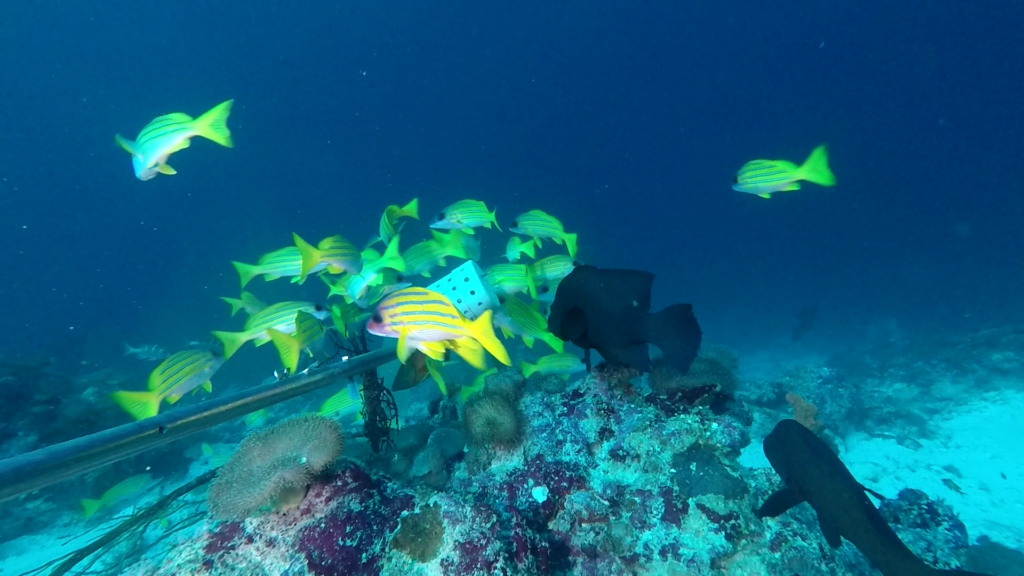
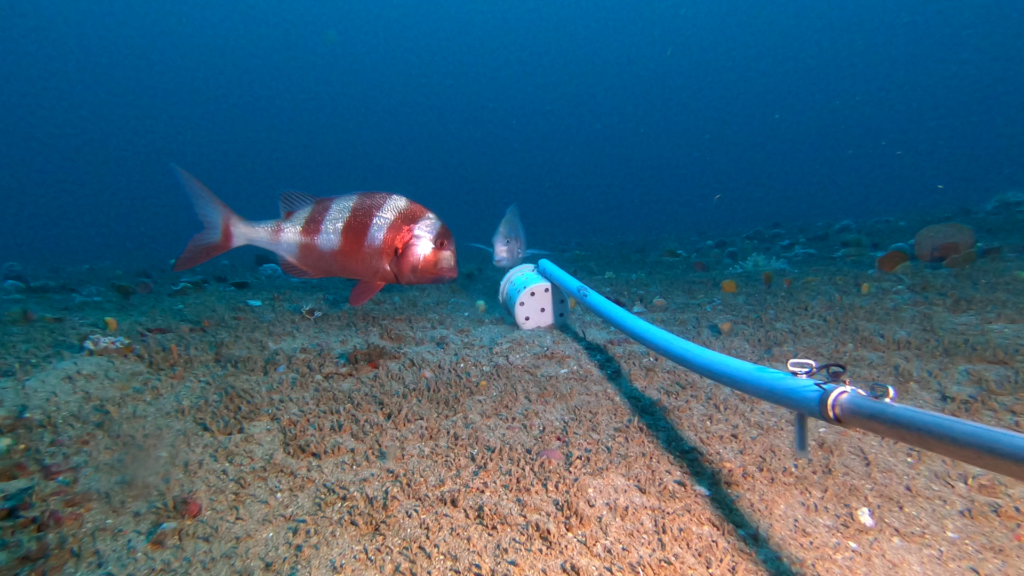
Images captured underwater by the BRUVs instrument.
In attendance were representatives from various research institutions such as Marine Megafauna Foundation (MMF) and the University of the Western Cape (UWC). Majority of the attendees found the workshop interesting and useful. Toufiek Samaai who is a specialist scientist from the Department of Forestry, Fisheries and the Environment (DFFE) expressed that, “The workshop was interesting and very informative because we are still learning the techniques of using BRUVs in our research. I learnt a lot about the data management systems that have been developed for BRUVs which was very useful as masses of data can be collected and appropriate methodology for archiving data correctly is essential.”
Naseeba Sidat from the Wildlife Conservation Society shared that, “The workshop was very inspiring because we have been using BRUVs from 2018 and SAIAB is a key institution in terms of providing us with the standard technical procedures and the technical support. I found the idea of bringing together people who are working on the same technique from different parts of the country and also from the region as a whole very valuable. Bringing managers and government technicians together to discuss how to use the information gathered from BRUVs was very beneficial because I feel like there is still a gap between scientists and the government.”
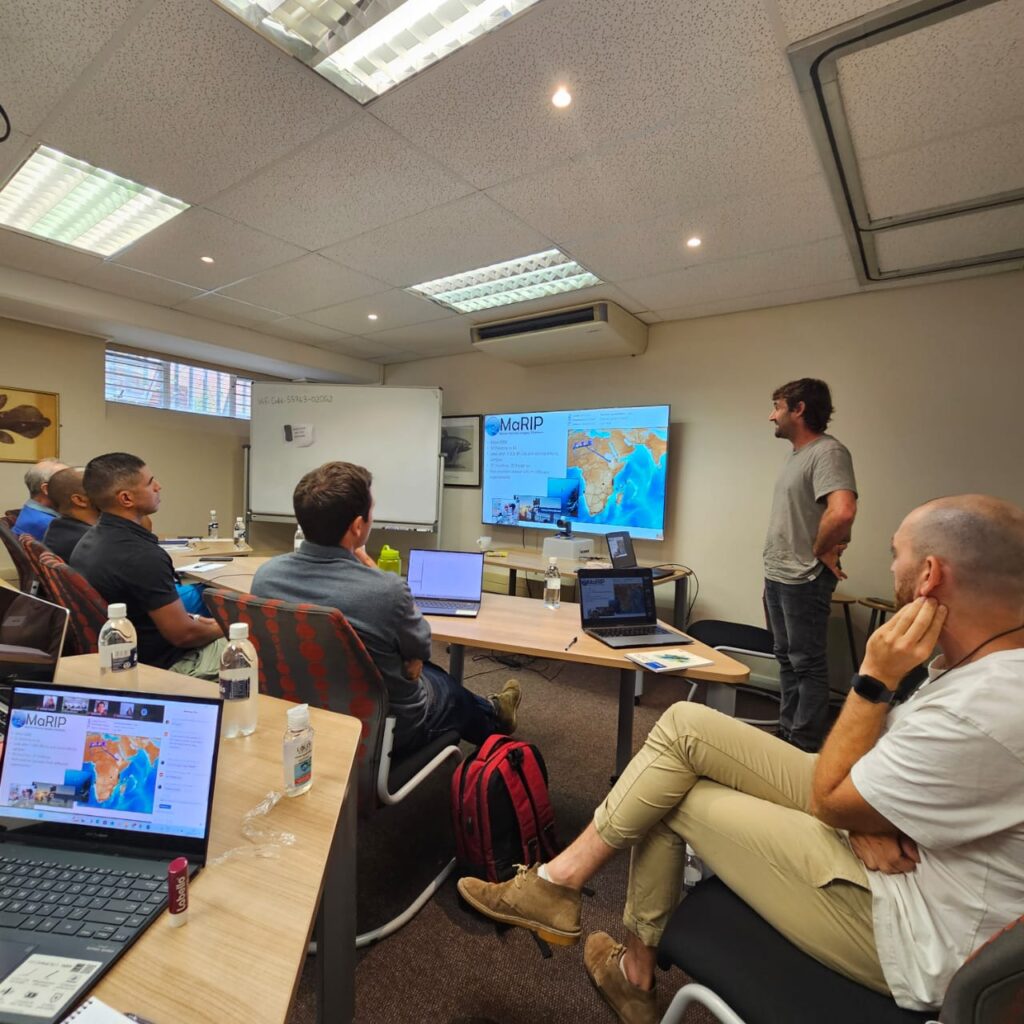
Dr Bernard said he hoped that the attendees left the workshop with a firm understanding of the BRUVS method standards, from equipment setup through to data management, quality control and how to represent the data. He also mentioned that he hopes that the participants learnt that there are ways to obtain the relevant support within the South African BRUVs network and that everything they do has the potential to contribute to bigger scale research and management objectives.
This workshop was supported by the National Research Foundation’s (NRF) Competitive Programme for Rated Researchers (CPRR) fund, NRF-SAIAB through its African Coelacanth Ecosystem Programme (ACEP), NRF-South African Environmental Observation Network (SAEON), and the Shallow Marine and Coastal Research Infrastructure (SMCRI).
